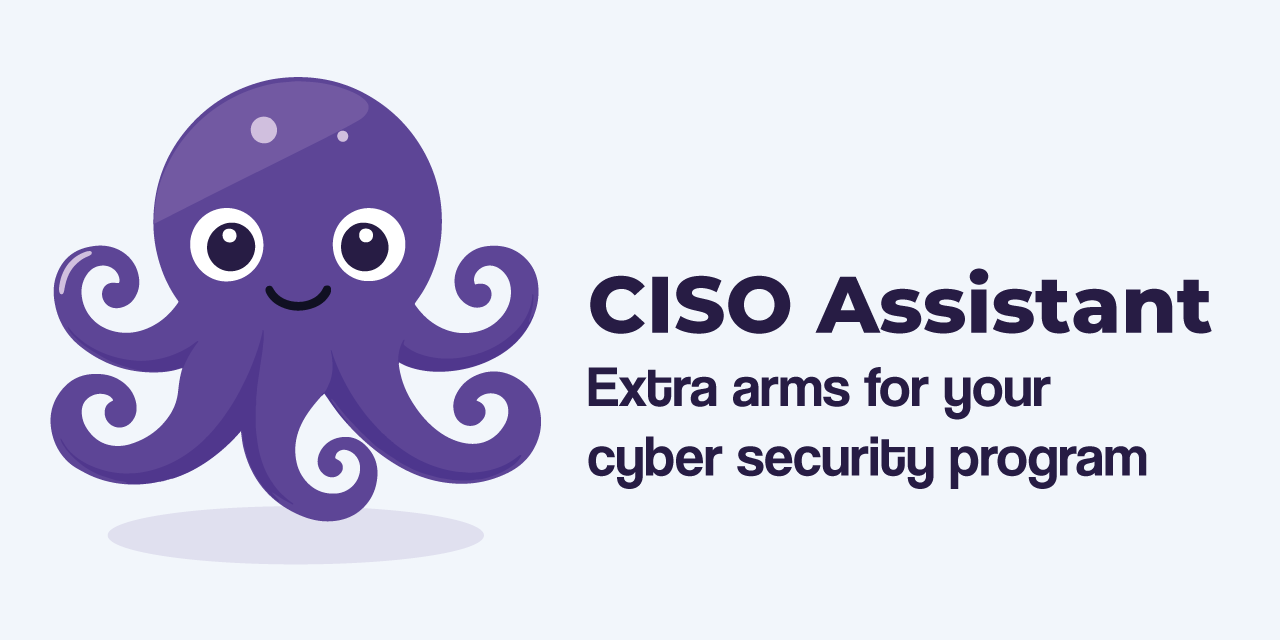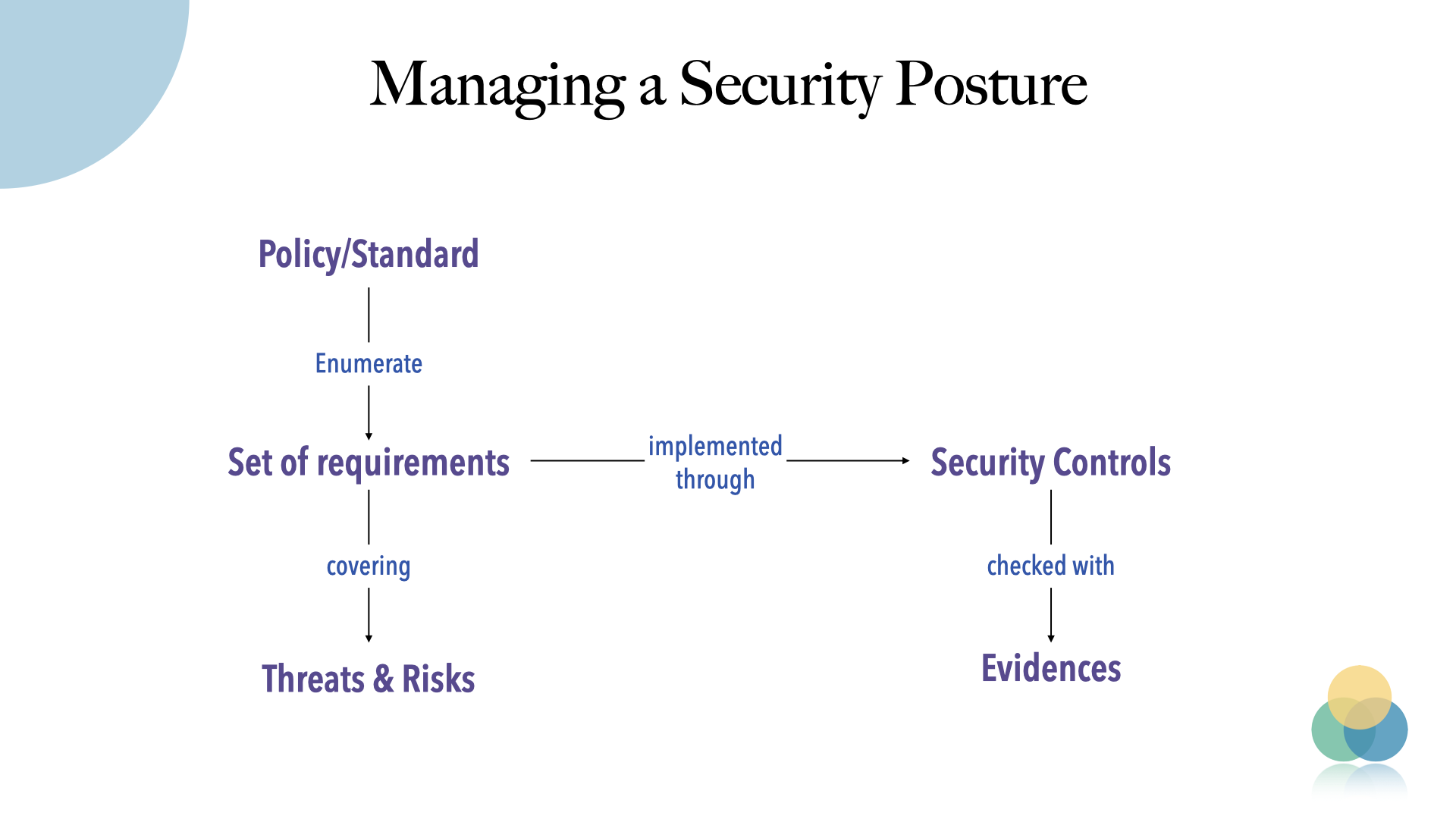intuitem.com
·
SaaS Free trial
·
Docs
·
Discord
·
Frameworks
CISO Assistant brings a different take to GRC and Cyber Security Posture Management:
- by explicitly decoupling compliance from cybersecurity controls implementation
- has built-in standards, security controls and threats
- risk assessment and remediation plan follow-up
- allows to manage a catalog for security controls and threats
- you can bring your own framework as well using a simple syntax
- manage audit, evidences collection and report generation
Our vision is to provide a one stop shop for cyber security posture management and cover the layers of GRC (Governance, Risk and Compliance). As practitioners interacting with multiple cybersecurity and IT professionals, we have struggled with fragmentation and lack of efficient tooling. We keep improving CISO Assistant with anything that could bring clarity and productivity to cybersecurity teams and reduce the effort of research, audit management and paperwork.
CyberSecurity teams need to use GRC as a foundation to structure their program and implement the right tools and processes to mitigate the risks, and leave the rest to CISO Assistant 🐙
The vision of the tool is based on this model:
The full details are available in the data model.
The decoupling allows you to save a considerable amount of time:
- reuse previous assessments,
- assess a scope against multiple frameworks at the same time,
- leave the reporting formatting and sanity check to CISO assistant and focus on your fixes,
- balance controls implementation and compliance follow-up
CISO Assistant is developed and maintained by intuitem, a French 🇫🇷 company specialized in Cyber Security, Cloud and Data/AI.
Tip
The easiest way to get started is through the free trial of cloud instance available here.
Alternatively, once you have Docker and Docker-compose installed, on your workstation or server, clone the repo and run:
./docker-compose.shNote
The docker-compose script uses prebuilt Docker images supporting most of the standard hardware architecture. If you're using Windows, Make sure to have WSL installed and trigger the script within a WSL command line. It will feed Docker Desktop on your behalf.
Warning
If you're getting warnings or errors about image's platform not matching host platform, raise an issue with the details and we'll add it shortly after. You can also use docker-compose-build.sh instead (see below) to build for your specific architecture.
Check out the online documentation on https://intuitem.gitbook.io/ciso-assistant.
- ISO 27001:2022 🌐
- NIST Cyber Security Framework (CSF) v1.1 🇺🇸
- NIST Cyber Security Framework (CSF) v2.0 🇺🇸
- NIS2 🇪🇺
- SOC2 🇺🇸
- PCI DSS 4.0 💳
- CMMC v2 🇺🇸
- PSPF 🇦🇺
- GDPR checklist from GDPR.EU 🇪🇺
- Essential Eight 🇦🇺
- NYDFS 500 with 2023-11 amendments 🇺🇸
- DORA 🇪🇺
- NIST AI Risk Management Framework 🇺🇸
- NIST SP 800-53 rev5 🇺🇸
- France LPM/OIV rules 🇫🇷
- CCB CyberFundamentals Framework 🇧🇪
- NIST SP-800-66 (HIPAA) 🏥
- HDS/HDH 🇫🇷
- OWASP Application Security Verification Standard (ASVS) 🐝
- RGS v2.0 🇫🇷
- AirCyber
✈️ - Cyber Resilience Act (CRA) 🇪🇺
- TIBER-EU 🇪🇺
- NIST Privacy Framework 🇺🇸
- Tisax 🚘
- ANSSI hygiene guide 🇫🇷
- Essential Cybersecurity Controls (ECC) 🇸🇦
Checkout the library and tools for the Domain Specific Language used and how you can define your own.
- CIS
- CCM
- CCPA
- AI Act
- Part-IS
- SecNumCloud
- SOX
- MASVS
- FedRAMP
- and much more: just ask on Discord. If it's an open standard, we'll do it for you, free of charge 😉
Have a look in the tools directory and its dedicated readme. The convert_framework.py script will help you create your library from a simple Excel file. A typical framework can be ingested in a few hours.
You will also find some specific converters in the tools directory (e.g. for CIS or CCM Controls).
Join our open Discord community to interact with the team and other GRC experts.
The fastest and easiest way to get started is through the free trial of cloud instance available here.
To run CISO Assistant locally in a straightforward way, you can use Docker compose.
- Update docker
Make sure you have a recent version of docker (>= 25.0).
- Clone the repository
git clone git@github.com:intuitem/ciso-assistant-community.git
cd ciso-assistant-community- Launch docker-compose script for prebuilt images:
./docker-compose.shAlternatively, you can use this variant to build the docker images for your specific architecture:
./docker-compose-build.shWhen asked for, enter your email and password for your superuser.
You can then reach CISO Assistant using your web browser at https://localhost:8443/
For the following executions, use "docker compose up" directly.
Tip
If you want a fresh install, simply delete the db directory, (default: backend/db) where the database is stored.
- Python 3.11+
- pip 20.3+
- node 18+
- npm 10.2+
- Clone the repository.
git clone git@github.com:intuitem/ciso-assistant-community.git
cd ciso-assistant-community- Create a file in the parent folder (e.g. ../myvars) and store your environment variables within it by copying and modifying the following code and replace
"<XXX>"by your private values. Take care not to commit this file in your git repo.
Mandatory variables
All variables in the backend have handy default values.
Recommended variables
export DJANGO_DEBUG=True
# Default url is set to http://localhost:5173 but you can change it, e.g. to use https with a caddy proxy
export CISO_ASSISTANT_URL=https://localhost:8443
# Setup a development mailer with Mailhog for example
export EMAIL_HOST_USER=''
export EMAIL_HOST_PASSWORD=''
export DEFAULT_FROM_EMAIL=ciso-assistant@ciso-assistantcloud.com
export EMAIL_HOST=localhost
export EMAIL_PORT=1025Other variables
# CISO Assistant will use SQLite by default, but you can setup PostgreSQL by declaring these variables
export POSTGRES_NAME=ciso-assistant
export POSTGRES_USER=ciso-assistantuser
export POSTGRES_PASSWORD=<XXX>
export POSTGRES_PASSWORD_FILE=<XXX> # alternative way to specify password
export DB_HOST=localhost
export DB_PORT=5432 # optional, default value is 5432
# Add a second backup mailer
export EMAIL_HOST_RESCUE=<XXX>
export EMAIL_PORT_RESCUE=587
export EMAIL_HOST_USER_RESCUE=<XXX>
export EMAIL_HOST_PASSWORD_RESCUE=<XXX>
export EMAIL_USE_TLS_RESCUE=True
# You can define the email of the first superuser, useful for automation. A mail is sent to the superuser for password initialization
export CISO_SUPERUSER_EMAIL=<XXX>
# By default, Django secret key is generated randomly at each start of CISO Assistant. This is convenient for quick test,
# but not recommended for production, as it can break the sessions (see
# this [topic](https://stackoverflow.com/questions/15170637/effects-of-changing-djangos-secret-key) for more information).
# To set a fixed secret key, use the environment variable DJANGO_SECRET_KEY.
export DJANGO_SECRET_KEY=...
# Logging configuration
export LOG_LEVEL=INFO # optional, default value is INFO. Available options: DEBUG, INFO, WARNING, ERROR, CRITICAL
export LOG_FORMAT=plain # optional, default value is plain. Available options: json, plain- Choose the tool of your choice, either python-venv or virtualenv. For example:
# Install python-venv
sudo apt install python-venv # or python3-venv
# Create the virtual environment venv
python -m venv venv # or python3 -m venv venv
# To enter inside the virtual environment
source venv/bin/activate
# If you want to exit the virtual environment once finished
deactivate- Install required dependencies.
pip install -r requirements.txt- If you want to setup Postgres:
- Launch one of these commands to enter in Postgres:
psql as superadminsudo su postgrespsql
- Create the database "ciso-assistant"
create database ciso-assistant;
- Create user "ciso-assistantuser" and grant it access
create user ciso-assistantuser with password '<POSTGRES_PASSWORD>';grant all privileges on database ciso-assistant to ciso-assistantuser;
- Apply migrations.
python manage.py migrate- Create a Django superuser, that will be CISO Assistant administrator.
If you have set a mailer and CISO_SUPERUSER_EMAIL variable, there's no need to create a Django superuser with
createsuperuser, as it will be created automatically on first start. You should receive an email with a link to setup your password.
python manage.py createsuperuser- Run development server.
python manage.py runserver- Configure the git hooks for generating the build name.
cd .git/hooks
ln -fs ../../git_hooks/post-commit .
ln -fs ../../git_hooks/post-merge .- cd into the frontend directory
cd frontend- Install dependencies
npm install- Start a development server (make sure that the django app is running)
npm run dev- Reach the frontend on http://localhost:5173
Note
Safari will not properly work in this setup, as it requires https for secure cookies. The simplest solution is to use Chrome or Firefox. An alternative is to use a caddy proxy. This is the solution used in docker-compose, so you can use it as an example.
- Environment variables
All variables in the frontend have handy default values.
If you move the frontend on another host, you should set the following variable: PUBLIC_BACKEND_API_URL. Its default value is http://localhost:8000/api.
When you launch "node server" instead of "npm run dev", you need to set the ORIGIN variable to the same value as CISO_ASSISTANT_URL in the backend (e.g. http://localhost:3000).
The migrations are tracked by version control, https://docs.djangoproject.com/en/4.2/topics/migrations/#version-control
For the first version of the product, it is recommended to start from a clean migration.
Note: to clean existing migrations, type:
find . -path "*/migrations/*.py" -not -name "__init__.py" -delete
find . -path "*/migrations/*.pyc" -deleteAfter a change (or a clean), it is necessary to re-generate migration files:
python manage.py makemigrations
python manage.py migrateThese migration files should be tracked by version control.
To run API tests on the backend, simply type "pytest" in a shell in the backend folder.
To run functional tests on the frontend, do the following actions:
- in the frontend folder, launch the following command:
tests/e2e-tests.shThe goal of the test harness is to prevent any regression, i.e. all the tests shall be successful, both for backend and frontend.
The docker-compose.yml highlights a relevant configuration with a Caddy proxy in front of the frontend.
Set DJANGO_DEBUG=False for security reason.
Note
The frontend cannot infer the host automatically, so you need to either set the ORIGIN variable, or the HOST_HEADER and PROTOCOL_HEADER variables. Please see the sveltekit doc on this tricky issue.
Note
Caddy needs to receive a SNI header. Therefore, for your public URL (the one declared in CISO_ASSISTANT_URL), you need to use a FQDN, not an IP address, as the SNI is not transmitted by a browser if the host is an IP address. Another tricky issue!
- Django - Python Web Development Framework
- SvelteKit - Frontend framework
- Gunicorn - Python WSGI HTTP Server for UNIX
- Gitbook - Documentation platform
- PostgreSQL - Open Source RDBMS
- SQLite - Open Source RDBMS
- Docker - Container Engine
- inlang - The ecosystem to globalize your software
Great care has been taken to follow security best practices. Please report any issue to security@intuitem.com.

